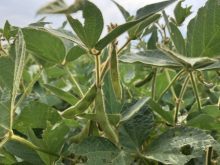Manure management becomes an important issue when cattle are confined. If handled inappropriately, it can be a liability, adversely affecting the health of the herd and the environment. If managed well, it can have value as fertilizer.
Manure can be contaminated with a number of infectious agents, posing a threat to herd members and sometimes to people.
As soon as cattle are restricted to a small area, their manure will
accumulate and infectious agents will become concentrated in the environment. The first signal of a problem could be an explosive outbreak of infectious disease, usually scours or pneumonia in calves.
Read Also

Rural communities can be a fishbowl for politicians, reporter
Western Producer reporter draws comparisons between urban and rural journalism and governance
Infectious disease can strike even those calves that have consumed adequate colostrum. Though their immunity should be good, they are overwhelmed by the sheer number of organisms in their immediate environment.
Consider the calf that is infected by 300 bacteria versus the calf that is exposed to 300 million bacteria. There is a good chance that a calf with optimal immunity can handle 300 bacteria. No matter how good its immunity, no calf can deal with 300 million bacteria. It will surely become ill.
Improper manure handling can also have environmental ramifications. Some infectious agents can survive in runoff, posing a health threat to people and other animals that drink the water.
The nutrients in manure can also hurt the environment. If nitrogen and phosphorus end up in water bodies, they will promote algae growth, which can reduce the oxygen available to fish. Besides adversely affecting fish health, too much algae can also harm the quality of drinking water for people.
Good manure management systems will protect cattle, especially calves, and the environment. It is unwise to allow calves access to pastures where cows have contaminated the soil for months.
As a result, producers should overwinter their cow herds in areas separate from the calving grounds. This will reduce the incidence of infectious disease in calves by minimizing exposure to pathogens.
Spreading cattle out can also minimize the risk of infectious organism transmission. The easiest way to promote cattle movement is to ensure bedding, feeders, and water sources are in different areas.
Feeders can also be relocated regularly to encourage continued cattle movement.
As soon as cows have calved, cow-calf pairs should be moved to a clean area, away from the main herd. This approach will further reduce calf exposure to pathogen-laden manure.
When cattle spread out, their manure will be scattered over a larger area, which helps avoid run-off problems during spring melts. Because manure’s nutrients and pathogens pose a threat, its runoff should not be allowed to directly enter a watercourse. If the land is steeply sloped, dikes may be needed to contain the water so it can seep into the ground. Vegetation such as a treed buffer area or a natural wetland can help use the nutrients, dissipating them before they enter a water body.
Jeff Grognet is a veterinarian and writer practising in Qualicum Beach, B.C.














